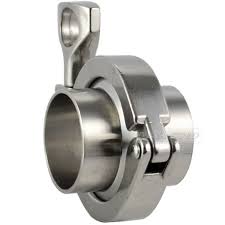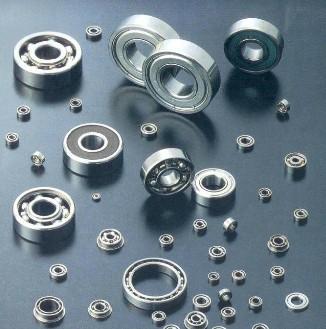How to Measure a Sanitary Fitting?

What Are Sanitary Fittings?
Flange fittings are generally used for connections to valves, inline instruments, or equipment nozzles. Two surfaces are joined tightly together with threaded bolts, wedges, clamps, or other means of applying high compressive force. Although a gasket, packing, or O-ring may be installed between the flanges to prevent leakage, it is sometimes possible to use only a special grease or nothing at all. Although flange sanitary fittings are bulky, they perform well in demanding applications such as large water supply networks and hydroelectric systems.

How to Measure a Sanitary Fitting?
How are Sanitary Fittings Measured?
Sanitary pipes are measured by the outside diameter (OD) of the tube. To measure a sanitary fitting, measure the OD of the tube section of the fitting. It’s important to distinguish the outside diameter from the inside diameter. Thicker piping can have significant differences between the inside and outside diameters. The OD is the measurement from the external-facing surface of the pipe. Use this size first when referring to sanitary pipes and fittings, not the end-fitting face measurements. Sanitary sizes range from ½” up to 12”.
The flanges have a nominal pressure of 150, 300, 400, 600, 900, 1500, and 2500 lbs or 10, 15, 25, 40, 64, 100, and 150 bars. Different types of flanges are available, depending on the desired construction and performance specifications. The flanges used in the piping (orifice, threaded, slip-on, blind, weld neck, bushing, lap joint, and reducer) are available with a variety of facings, such as raised, flat and O-ring.
Butt welding techniques are used to join weld neck flanges to piping systems. Although its long neck (or hub) makes it expensive, it reduces mechanical stress on piping by distributing stress between the base of the flange and the wall at the weld. Perfect size and fit between the pipe and flange will significantly reduce turbulence and erosion.
What is a Flange?
Flanges are critical components of piping systems, used to connect pipes, valves, pumps, and other equipment. Flanges are used in pairs, and the most common flanges appear where two pipes link together. A circular or sometimes square plate is welded around the end of each pipe, protruding perpendicularly from the direction of conveyance. The flange’s endplates are welded and/or screwed together to create a permanent flange seal. These plate-shaped parts are most common in pipeline engineering. Flanges need a sealing point between the two flange plates that are fastened with bolts. Flanges with different pressure tolerances have various thicknesses and use different bolts.
What Are Flange Fitting Parts?
Pumps and valves can be connected to pipelines, with their connection points built to the corresponding flange shape, also known as the flange connection. All of the components which connect the bolts in two planes to remain sealed at the same time are generally considered part of the “flange,” such as the connection of ventilation pipes. These components can also be called “flange parts.” But this kind of connection is only a part of the equipment, such as the connection between the flange and the water pump. For example, the water pump is not generally considered “flange parts.” Relatively small parts, such as valves, can be called “flange parts.”
How to Use Sanitary Flange Fittings
Sanitary flange fittings are often located in the drain pipe and provide accessories for pipe fittings. The edge of the flange appears around the edge of the drain pipe. In addition, a short pipe reaches down and connects with the pipe. The flange is an important part of the drainage device and needs to be properly installed to reduce the risk of leakage and other problems. According to the design, the drain pipe may be discharged into the flange during installation. The plumber can apply a thin layer of plumber putty on the edge of the drainpipe and then push the flange in place.
Putty ensures a tight connection, prevents leakage, and secures the flange so that it does not sway or slide. Traps and plugs can be installed on the flange to prevent debris from entering the drain and allow users to block activities such as bathing or dishwashing. Sometimes it is necessary to remove the drain flange to replace it or the connected parts.
How to Maintain Sanitary Flange Fittings?
Disassembling a sanitary flange fitting depends on the unique installation features. But, a few reliable steps can always be taken. The bucket should be placed under the pipe to collect any dripping or leakage and allow people to safely screw off the fittings under the drain pipe. Once these fittings are loose, it should be possible to see if it is necessary to loosen the flange, or if it can be gently nudged from below to force them to pop out so that they can be removed.
Before replacing the flange, it is important to clean around the drain pipe and re-apply the plumber’s putty to make it tightly sealed and avoid leakage. The standard size can be used with different types of sanitary ware. They shall be used interchangeably between manufacturers. Purchasers may need to consider the color and finish when purchasing replacement flanges to ensure they match. These parts are usually made of metal and may be glossy, especially in the visible part of the drain flange. This may require mild maintenance to prevent scratches and damage. Corrosive materials should not be treated directly on the surface or in the drainpipe on a regular basis. It is recommended to check the pipe regularly for problems and replace the drain flange and other parts before starting to leak.





